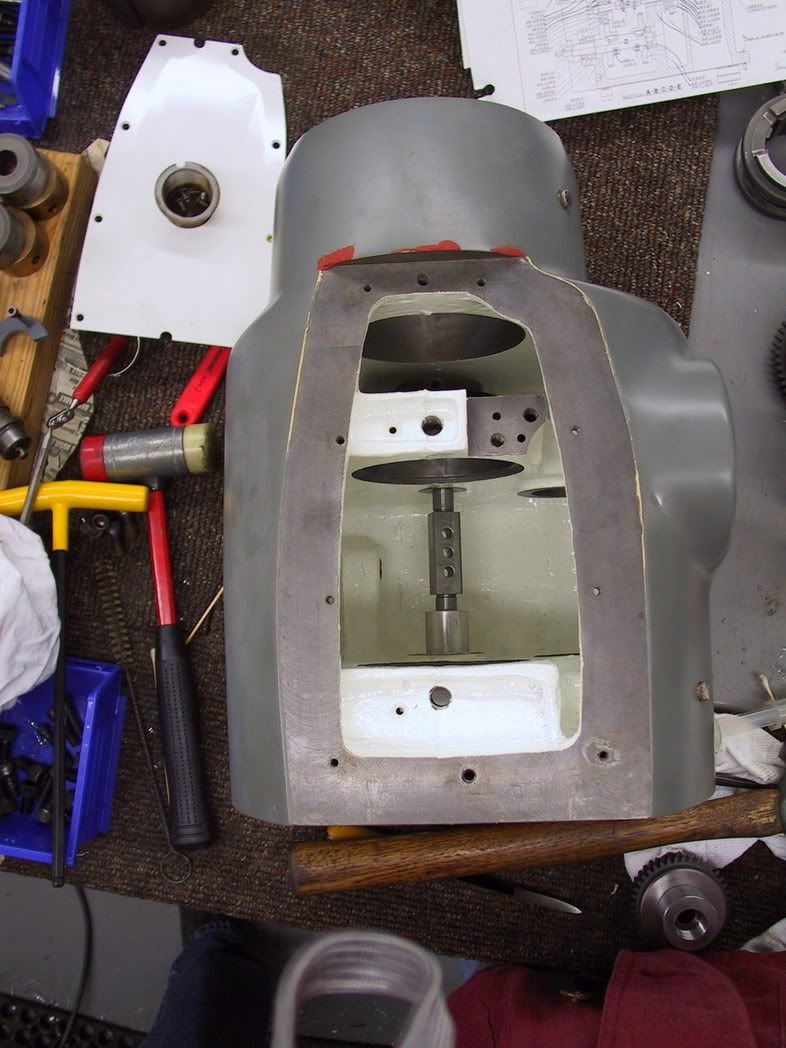BigToys
Aluminum
- Joined
- Feb 14, 2006
- Location
- New Jersey
I’ve taken the headstock of my 1948 10EE nearly apart to clean the gunk out of the oil sumps and to put in new bearings for the feed gears. The spindle bearings seem to be good and are not being replaced, at least for the time being. The following questions have arisen;
1) How do you get the shaft that holds the shifter yoke out? This shaft has round ends which support a pair of ball-bearing idler gears and a square center section where the yoke and rack gear attach to it. It looks like the end support cylinders are pressed into the casting at the factory and require draconian actions to remove them. Do any of you guys out there have a simple method get this thing out of there?
2) The white paint has flaked away from the casting in places and I wish to re-paint the interior of the headstock (another reason I want to get the shifter yoke shaft out of there). Of immediate concern is getting the metal clean enough to get new paint to stick. In other places on the machine, I’ve scrubbed the white paint with MEK which partial dissolves the existing finish. Then I’ve bushed on almond-colored Rustoleum. In my tests, the machine oil does not attack the new Rustoleum. But will this approach stand the test of time? Does anyone have a better idea?
3) Finally, is there a good way to clean the spindle bearings before re-assembly? As you know, the two front bearings are separated by precision length spacers, and seem to be pressed on to the spindle. I would like to get the off the spindle, but I’m afraid that any attempt to remove them may be courting disaster … Comments?
1) How do you get the shaft that holds the shifter yoke out? This shaft has round ends which support a pair of ball-bearing idler gears and a square center section where the yoke and rack gear attach to it. It looks like the end support cylinders are pressed into the casting at the factory and require draconian actions to remove them. Do any of you guys out there have a simple method get this thing out of there?
2) The white paint has flaked away from the casting in places and I wish to re-paint the interior of the headstock (another reason I want to get the shifter yoke shaft out of there). Of immediate concern is getting the metal clean enough to get new paint to stick. In other places on the machine, I’ve scrubbed the white paint with MEK which partial dissolves the existing finish. Then I’ve bushed on almond-colored Rustoleum. In my tests, the machine oil does not attack the new Rustoleum. But will this approach stand the test of time? Does anyone have a better idea?
3) Finally, is there a good way to clean the spindle bearings before re-assembly? As you know, the two front bearings are separated by precision length spacers, and seem to be pressed on to the spindle. I would like to get the off the spindle, but I’m afraid that any attempt to remove them may be courting disaster … Comments?



